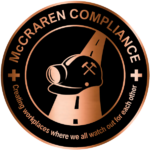
Photo: HadelProductions/iStockphoto
Washington — Certain personal risk factors increase workers’ risk for heat-related injury and illness, OSHA cautions.
“Although you may be exposed to similar levels of heat and engaged in the same type of work as your co-workers, personal risk factors” such as health conditions, medications, and physical and behavioral characteristics “may cause you to be at greater risk,” the agency says in a recently published document.
Conditions or medications that can cause a worker to be less likely to sense heat conditions or retain water include:
- Diabetes
- High blood pressure
- Heart disease
- Obesity
- Mental health conditions
- Respiratory diseases such as asthma or chronic obstructive pulmonary disease
- Blood pressure medications
- Muscle relaxants
- Sedatives
Additionally, some physical or behavioral characteristics may cause a worker to dehydrate more quickly. These include:
- Age (60 and older)
- Lower level of physical fitness
- Pregnancy
- Acclimatization status
- Lower intake of water
- Alcohol use within 24 hours of shift
- Use of illicit drugs, such as opioids, methamphetamine and cocaine
“Ultimately,” OSHA says, “it is the employer’s responsibility to ensure the workplace is safe and healthful for workers; however, a heat injury and illness prevention plan needs the meaningful participation of workers and their representatives to be effective.”
The agency has tips to help keep workers safe in the heat:
- Discuss with your medical provider how to best prepare to work in hot conditions.
- Drink 8 ounces of water every 15-20 minutes, even if you aren’t thirsty.
- Notify your supervisor if you feel ill and move to a cool space.
- Take rest breaks in air-conditioned spaces or cool or shaded areas.
- Check on co-workers regularly; report signs of heat illness to a supervisor, and provide water or ice while remaining with them until help arrives.
- Wear loose-fitting, light-colored clothing comprised of breathable fabric, like cotton.
- Know your employer’s emergency response plan; when in doubt, call 911.
- Gradually acclimatize to the heat when returning to work after time away.
McCraren Compliance offers a full range of safety and health training and consulting services. Plus we can help you incorporate well-being into your traditional systems in order to support the Total Worker Health of your workforce.
Call 888-758-4757, email info@mccrarencompliance.com or visit our website www.mccrarencompliance.com
Original article published by Safety+Health an NSC publication


